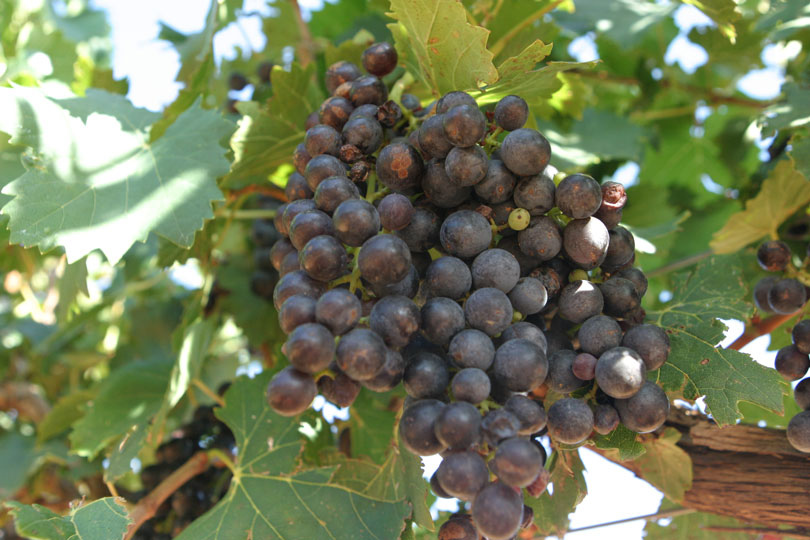By Justin Walker
Communications Specialist
Texas wine grape vineyards have had a challenging year, but consumers could be in for exceptional tastes, according to Texas A&M AgriLife Extension Service experts.
The 2019 wine grape season was tough for many growers, Michael Cook, AgriLife Extension viticulture program specialist in Denton, said. Vines were producing lower yields but high-quality fruit when it comes to winemaking.
“This season has been the tale of two extremes for most producers,” he said. “We had an exceptionally wet spring from the Gulf Coast to Hill Country and High Plains over to North Texas. Ample rains started in the fall and didn’t stop. All that rain was a blessing and a curse.”
Consistent rains helped the vines emerge uniformly at bud break, but canopy management was significantly increased, Cook said.
The moisture levels also increased the disease potential for fungal pathogens, including black rot and downy mildew, he said.
“Downy mildew was especially pervasive this season due to the abundance of rain,” Cook said. “It was a major threat to producers who were not steadfast in their proactive management strategies. But I think most producers were prepared and adapted to the disease pressure.”
Hill County vineyards have dealt with their share of bacterial and fungal pathogens, Brianna Hoge, AgriLife Extension viticulture program specialist in Fredericksburg, said.
“Some producers maybe sprayed a little late, but it’s definitely been a busy season,” Hoge said. “Disease pressure kept everyone on their toes.”
Several pathogens such as sour rot, bunch rot and botrytis have been especially troublesome this season.
Most vineyards are reporting lower-than-normal yields, Cook said, due to late April storms during blooming.
“The wind, rain and cloudy days slightly reduced fruit set at that critical time,” Cook said. “Vineyards in the High Plains are expecting higher yields because their vines were not in full bloom when those storms were occurring.”
Hill Country yields were also down this year, Hoge said, but berry weights could offset reduced fruit sets.
While yields are low, fruit quality should be exceptional. Early-harvest varieties along the Gulf Coast and Northeast Texas have reported high-quality and Hill Country grape quality is expected to be high, as well.
“The reduced fruit set meant vines could put more energy into each berry,” Hoge said. “The rain and cooler temperatures also kept pH levels below 4, which is good, and brix levels—the sugar content in grapes—were good overall.”

